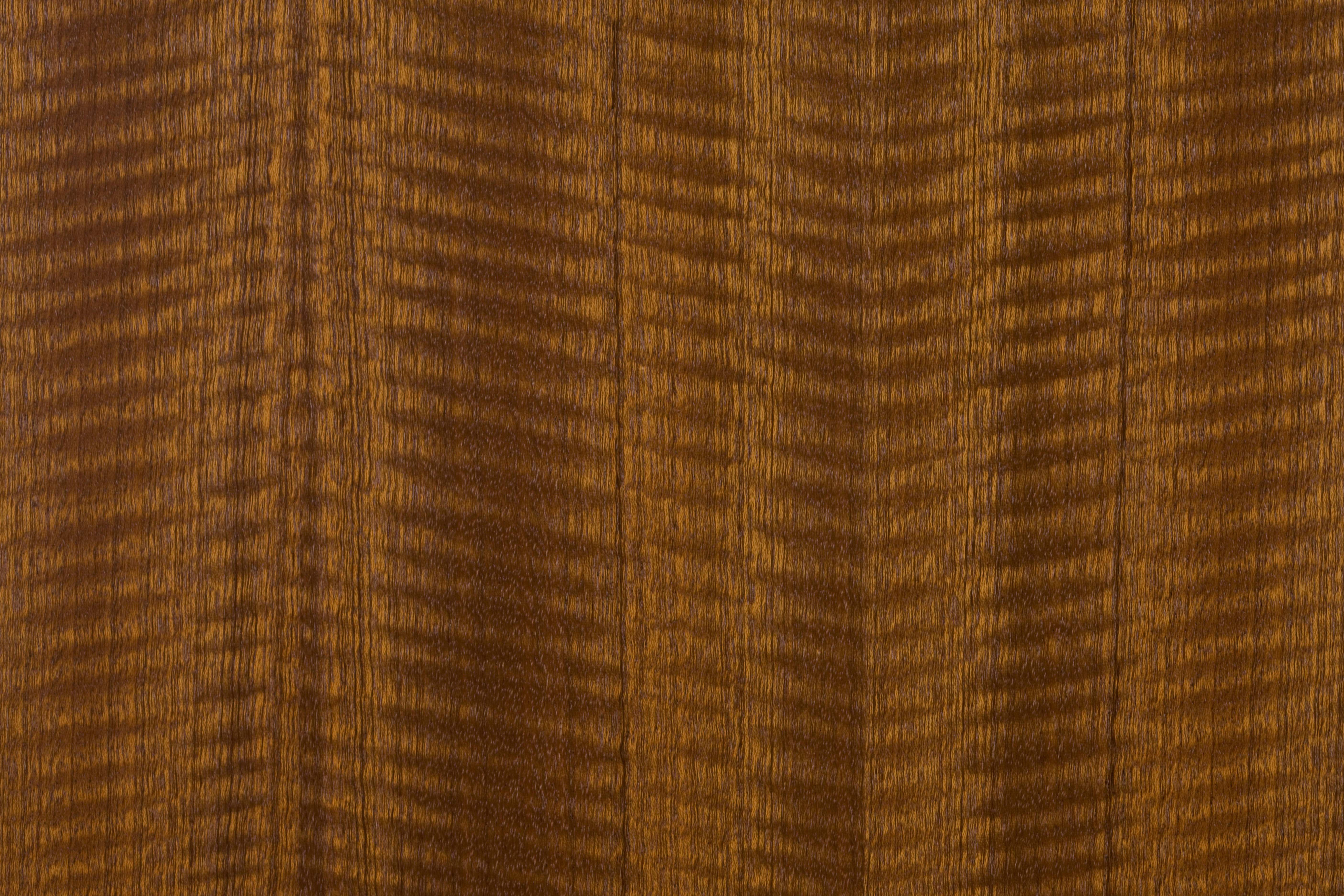Sapele wood
Contents |
[edit] Introduction
Entandrophragma cylindricum, or what it’s most commonly known as Sapele, is a member of the mahogany family. Sapele is a timber originating from tropical Africa and grows to incredible dimensions; up to a height of 45m and a diameter of 10m.
It is harder and heavier than African mahogany, weighing about 640kg/m3 when dried. This wood can also range from the Ivory Coast to the Cameroons and eastward through Zaire to Uganda.
Sapele’s colour tends to darken with age, from a golden brown to a dark, reddish hue. As well as the common ribbon pattern seen on quarter sawn boards, Sapele is also known for a wide variety of other figured grain patterns, such as: pommele, quilted, mottled, wavy, beeswing, and fiddleback.
[edit] Properties
Sapele has good durability, strength, and density, and can be used both internally and externally. It can be used for skirting boards, architraves, flooring, picture frames, furniture, mouldings, doors, conservatories, panelling and so on.
The texture of the grain is interlocked and sometimes wavy, with a fine uniform texture and good natural luster. Sapele has a distinct, cedar-like scent while being worked.
The hardness, medium density, and propensity for straight grained boles, makes Sapele wood very stable. This timber travels a long distance to reach the UK, but with its natural superior stability, it remains undamaged.
Being much harder than African or American mahogany, the resistance to indention, bending strength, and stiffness is almost equal to English oak.
[edit] Common uses
It is very popular for use in joinery and furniture making becuase of its exceptional stability, consistency of quality, and cost effectiveness.
Sapele is a popular choice for veneers on sheet materials, which are widely used for furniture and cabinet making. This wood can be stained, polished, waxed, oiled, and varnished. Most commonly used for exterior applications (as a window and door material) it is almost completely rot and weather resistant. It is also ideal for painted applications due to its fine graining.
Among its more exotic uses, Sapele is used for the back and sides of acoustic guitar bodies and the tops of electric guitar bodies. It is also used in manufacturing the neck piece of ukuleles and 26- and 36- string harps.
Sapele is a commonly exported and an economically important African wood species, being sold both in timber and veneer form. It is occasionally used as a substitute for Genuine Mahogany, and is sometimes referred to as Sapele Mahogany.
The availability of Sapele adds to its many valued attributes to make it easily and sustainably sourced. With the consistently high and steadily available supply of Sapele, it gives this timber species a small price tag and good popularity ratings amongst those who have tried using it as an alternative to genuine Mahogany.
--G&S Specialist Timber 16:07, 23 Jan 2017 (BST)
[edit] Find out more
[edit] Related articles on Designing Buildings Wiki
- 11 things you didn't know about wood.
- Ancient Woodland.
- Chip carving.
- Confederation of Timber Industries.
- Cross-laminated timber.
- Definition of tree for planning purposes.
- Engineered bamboo.
- European Union Timber Regulation.
- Forest Stewardship Council.
- Glulam.
- Laminated veneer lumber LVL.
- Oak wood properties.
- Pine wood.
- Plywood.
- Programme for the Endorsement of Forest Certification.
- Properties of mahogany.
- Timber.
- Timber preservation.
- Timber v wood.
- Tree preservation order.
- Tree rights.
- Types of timber.
- Walnut.
Featured articles and news
The UK's Modern Industrial Strategy: A 10 year plan
Previous consultation criticism, current key elements and general support with some persisting reservations.
Building Safety Regulator reforms
New roles, new staff and a new fast track service pave the way for a single construction regulator.
Architectural Technologist CPDs and Communications
CIAT CPD… and how you can do it!
Cooling centres and cool spaces
Managing extreme heat in cities by directing the public to places for heat stress relief and water sources.
Winter gardens: A brief history and warm variations
Extending the season with glass in different forms and terms.
Restoring Great Yarmouth's Winter Gardens
Transforming one of the least sustainable constructions imaginable.
Construction Skills Mission Board launch sector drive
Newly formed government and industry collaboration set strategy for recruiting an additional 100,000 construction workers a year.
New Architects Code comes into effect in September 2025
ARB Architects Code of Conduct and Practice available with ongoing consultation regarding guidance.
Welsh Skills Body (Medr) launches ambitious plan
The new skills body brings together funding and regulation of tertiary education and research for the devolved nation.
Paul Gandy FCIOB announced as next CIOB President
Former Tilbury Douglas CEO takes helm.
UK Infrastructure: A 10 Year Strategy. In brief with reactions
With the National Infrastructure and Service Transformation Authority (NISTA).
Ebenezer Howard: inventor of the garden city. Book review.
The Grenfell Tower fire, eight years on
A time to pause and reflect as Dubai tower block fire reported just before anniversary.
Airtightness Topic Guide BSRIA TG 27/2025
Explaining the basics of airtightness, what it is, why it's important, when it's required and how it's carried out.
Construction contract awards hit lowest point of 2025
Plummeting for second consecutive month, intensifying concerns for housing and infrastructure goals.
Understanding Mental Health in the Built Environment 2025
Examining the state of mental health in construction, shedding light on levels of stress, anxiety and depression.






















